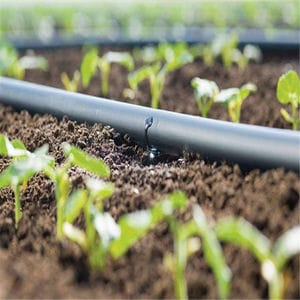 |
| Greenhouse in Nanyuki |
Greenhouse farming in Kenya is the use of either metallic or wooden greenhouses to produce vigorous, quality, and uniform growth in vegetables and flowers. This is achieved by the great micro-climate created inside the greenhouse by retaining the warmth that the plant needs for quick development.
Greenhouse Farming in Kenya: Advantages and Benefits
1. Greenhouse maximizes the use of space.
Greenhouse farming has become increasingly popular in Kenya due to its ability to provide year-round production of high-quality crops. One of the most profitable crops grown in greenhouses in Kenya is tomatoes. Here are some of the advantages and benefits of greenhouse tomatoes farming:
Greenhouses' structures are made with u.v treated polyethene that helps in providing warmth and screening harmful rays to reach the plants.Higher Yields
- Greenhouse farming offers higher yields per unit area compared to traditional open-field farming.
- The use of modern technology and techniques such as drip irrigation, fertigation, and the use of hybrid seeds can significantly increase tomato yields.
Better Quality Produce
- The controlled environment inside the greenhouse allows farmers to control factors such as temperature, humidity, and light, which are critical to the success of tomato cultivation.
- This results in better quality produce that is healthier and more attractive to consumers.
Reduced Pest and Disease Infestations
- Greenhouse tomatoes farming reduces the risk of crop loss due to pests and diseases.
- The controlled environment inside the greenhouse minimizes exposure to pests and diseases that are common in traditional open-field farming.
- This leads to a reduction in the use of pesticides and herbicides, making greenhouse tomatoes a healthier and more sustainable option.
Ideal Location
- Kenya's favorable climate and soil conditions make it an ideal location for greenhouse farming.
- With the right techniques and expertise, farmers can grow tomatoes in greenhouses throughout the year, providing a steady supply of fresh, healthy produce.
Promising Future for the Agricultural Sector
- Overall, greenhouse farming offers a promising future for the agricultural sector in Kenya.
- With its numerous advantages such as increased yields, reduced pest and disease infestations, and better quality produce, it presents a viable solution to the challenges faced by traditional open-field farming.
Greenhouse polythene
The greenhouse cover is made of three basic layers namely anti-drip, U.V treatment, air space to help in holding or retaining the absorbed heat, this helps in creating a stable temperature within the greenhouse regardless of the change in the external weather, anti-fungal, uva, I.r among others.A greenhouse structure houses hybrid vegetable varieties that can be harvested for a long period of between 3 to 12 months and produce quality and vigorous growing vegetables.
In Kenya, we do have the best climate with a stable agro-productive environment along the equator.
Greenhouse Polythene is key in greenhouse farming in Kenya.
Greenhouse drip irrigation
The greenhouse uses a drip irrigation kit that has perforations at different spacing according to vegetable spacing. This helps in reducing water wastage since each plant receives water at the exact spot for root absorption.
It also saves on the labor force since you only need one person to open the valve for the drip system to function.
Drip the system also helps in controlling weeds due to its spot watering that controls widespread watering favorable for weed growth.
With drip irrigation technology in greenhouse farming in Kenya, farmers are minimizing water usage and have uniformity in their produce.
Greenhouse plants are bred to produce the best quality in terms of taste, vigor, extended harvesting period, size, nutrition, color, and post-harvest longevity. Outdoor plants' harvesting period is short, most have a weak rind and do have a low shelf life after harvesting.
Before planting any vegetables in a greenhouse you need to consider the availability of the market, the price of the vegetable, transport cost, and shelf life. In greenhouse farming in Kenya, vegetable production is quality and with minimum chemical residue.
1. Tomatoes
2. Capsicums
3. Strawberry
4. Cucumber
5. Kales ( flame f1)
6. Indeginious vegetables.
2. Greenhouse plant variety.
Greenhouse plants are bred to produce the best quality in terms of taste, vigor, extended harvesting period, size, nutrition, color, and post-harvest longevity. Outdoor plants' harvesting period is short, most have a weak rind and do have a low shelf life after harvesting.
3. Plants that grow and are profitable in a greenhouse.
Before planting any vegetables in a greenhouse you need to consider the availability of the market, the price of the vegetable, transport cost, and shelf life. In greenhouse farming in Kenya, vegetable production is quality and with minimum chemical residue.
Here are some of the vegetables.
1. Tomatoes
2. Capsicums
3. Strawberry
4. Cucumber
5. Kales ( flame f1)
6. Indeginious vegetables.
Black soldier fly greenhouse farming in Kenya
Black soldier fly larvae are used as a protein supplement in chicken and pig feeds. Black soldier flies multiply quickly in warm climates.
Greenhouse Provide the best condition for black soldier flies to multiply and provide plenty of larvae.
Greenhouse fish farming in Kenya.
The greenhouse is used for fish farming to give rapid growth and to achieve the desired weight without heat and cold stress. Greenhouses maintain the optimal temperature for water. fish love warm water.
Hortitechno provides the best greenhouse and agro consultancy services.
FAQ.



.png)

 20%
20%



Greenhouse film is a protective covering designed to create an optimal environment for plant growth by regulating temperature, humidity, and light transmission. Made from high-quality polyethylene, it provides excellent UV resistance, durability, and insulation. This film helps extend growing seasons, protect crops from harsh weather conditions, and improve overall yield. Its transparency ensures adequate sunlight penetration while reducing heat loss at night. Available in various thicknesses and designs Greenhouse Plastic Manufacturer in Gujarat is a cost-effective and sustainable solution for farmers and gardeners looking to enhance productivity and crop quality.
ReplyDelete